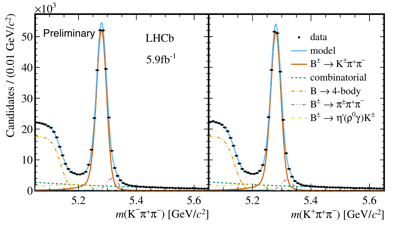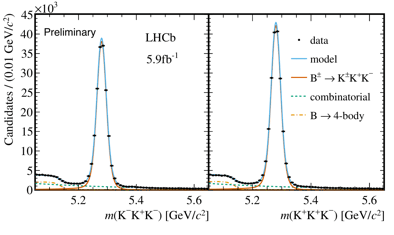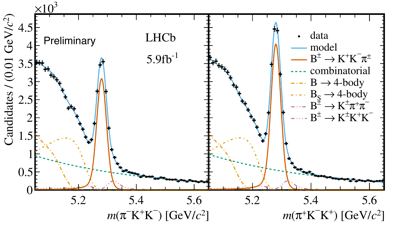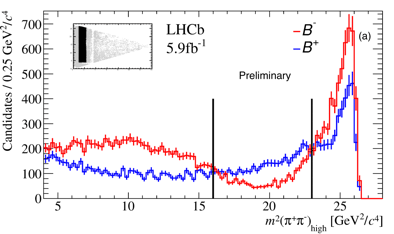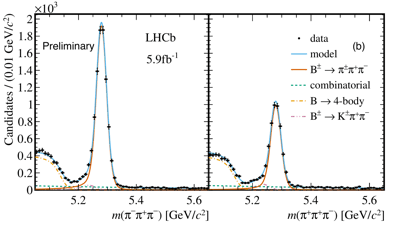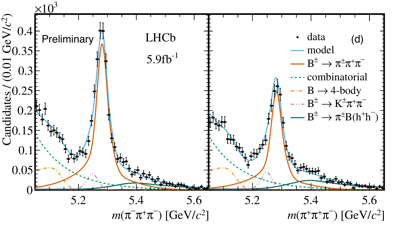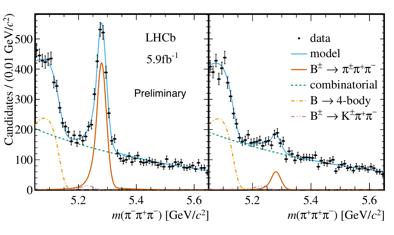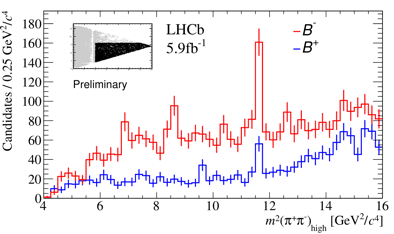The largest CP violation ever observed.
Today, at the Rencontres de Moriond EW, and on Tuesday, during a CERN seminar, the LHCb Collaboration reported the results of measurements of CP asymmetry in the charged charmless B meson decays into three light mesons. In these decays the b-quark is transformed into a u,d or s-quark instead of its dominant transition into a charm c-quark (therefore the decays are “charmless”). The CP asymmetries are observed with a significance of more than five standard deviations in the B±→K±K+K–, B±→π±π+π– and B±→π±K+K– decays, while the CP asymmetry of B±→K±π+π– decays is still compatible with zero. A nonzero CP asymmetry is a demonstration that matter and antimatter decay in different ways.
The CP violation is observed as a different rate of positively and negatively charged B meson decays into three light mesons, as seen in the image above for different B meson decays identified by the plot legents. The left panel in each figure shows the rate of the B– decays and the right one shows the B+ decays, both accumulated around the B meson mass. The biggest difference, around 14 standard deviations, is observed for the B±→π±π+π– and B±→π±K+K– decays.
A detailed study of the decay dynamics shows another fascinating feature, as it is shown in the images above, for the B±→π±π+π– decays. The top left image (a) shows the π+π– invariant mass spectrum separated by vertical lines into three regions. The different rates of B– (on the left) and B+ decays are clearly visible, for the three different regions (images (b), (c) and (d)) from left to right. The rates are very different indicating huge CP violation effects in different regions. Moreover, the sign of CP violation is positive in the low π+π– invariant mass region, and flips sign twice, as seen in the images above. The other B decays under study show similar effects.
In a specific kinematical region of the B±→π±π+π– decay, defined in the seminar and Moriond presentations, the CP asymmetry is as high as 75%, see the image to the left. This is the largest CP violation ever observed. The image above to the right shows the invariant mass squared of the π+π– meson pair in this specific kinematical region at which huge, different for B+ and B– decays, accumulation of events around the χc meson mass is clearly visible – another unexpected and very interesting feature.
LHCb discovered the magic features of the beauty meson charmless decays in 2012, see [1] and [2]. The CP violating effects are so spectacular that simplified analyses of these decays are used in the university exercises.
Read more in the LHCb presentation, in the CERN seminar, in the CERN update and in the forthcoming paper.

